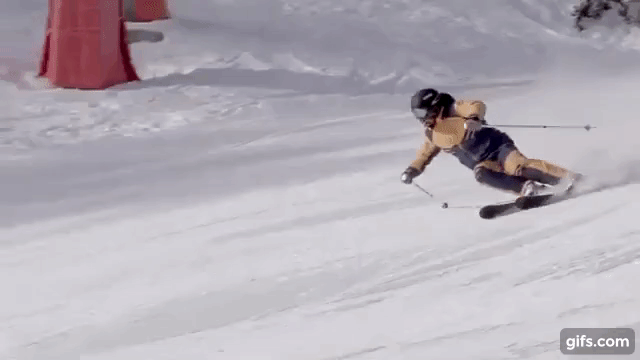@LiquidFeet first of all thanks a lot. This is my 4th ma req since 2015 and you have been there every time with very thorough feedback. I should buy you a beer or something but dont know how to do it from here

anyway

. Also the frame by frame comparison with jacob is super cool

. Lets get to it.
I will talk about 2 main kinds of transitions. Changing the lingo I will call them inside leg extension (ILE) and outside leg flexion (OLF).
In my previous ma s this extension had also been a subject. But I did not care so much about it because I liked the ILE transition. It gives my legs a brief moment of relaxation and a feeling of floating in the air at higher speeds. (only thing that bothered me was that looked like I was extending also at the hip joint which I thought I got rid of but apparently not since I can still see it in this video) Also I mostly ski at lower speeds so I thought ILE would be more appropriate since at low speeds I thought OLF would not work because there would not be sufficient centrifugal force to carry my body across the skis by flexing the outside leg. This is where I was WRONG.
Because this time on the mountain I tried it. OLF at low speed and it worked just fine. It was really shocking to me seriously like will smiths slap shocking. And then I skied 2 turns with ILE and 2 turns with OLF to see and feel the differences. I will get to that soon.
But before that think about how ILE and OLF work because this is what I thought about in the lift after the run. ILE creates up unweighing (UU) OLF creates (DU). What is the difference? Difference is the timing of creating the weightless state. In UU the the weightlessness happens at the end of the up movement that is at the end of extension in skiing (in fact in the beginning of extension move your weight increases momentarily due to acceleration against the gravity). In DU weightlessness happens as soon as the down movement begins that is the beginning of flexion in skiing. If we wait for the weightless state (or the time with less weight on our legs) to change edges DU has obvious advantage.
The guy in the italian video has higher speed so he has more time to roll onto the new edges once he is extended. But I am going slower so once I am extended and started to get onto new edges I have to make my turn quicker and make my outside ski my downhill ski quicker. And this creates a somewhat rushed turn or skid at the top of the turn (at high speed the new outside ski on the big toe edge can remain as uphill ski longer and create rounder shape at the top of the turn)
So interestingly OLF provides easier edge change at lower speeds because it unweighs you faster and lets you change edges earlier (in terms of time not in terms of where it happens in the turn)
So here is what I felt alternating ILE and OLF turns at low speeds.
When I used OLF:
the turn started much quicker
flow in my skiing improved dramatically
could get on the new edges earlier
turn shape improved
It was less work than extending
linking turns became so much easier
my feet traveled under my body effortlessly
*At times when my speed was very low and OLF was not enough inside leg helps by extending a bit. So it becomes like a hybrid transition. Probably in all turns there is a bit of ILE. So transition is not either OLF or ILE. What is important is how you initiate it and which one plays more role. So you can initiate the transition by OLF and mostly flex afterwards but inside leg is always there to help it by giving a push.
overall felt great and more fun. It was slushy so could not try on ice for grip but I have a strong that feeling grip also improved. So this is how I will be skiing from now on. I have a level 1 exam next week I will be using this type of transition in the exam.
Also tip your new inside foot inside that boot to its little toe edge - aka, lift the arch. This is invisible to the camera, but an important part of the flexion release. I suspect you may already be doing this.
I have been working on it.
I've chosen to do this to show you what you might want to work towards during the next few seasons, if you've got the time on snow to work on a few changes.
I think its pretty much done. I had practiced flexion few years ago to have it ready in case but never really used for skiing. First chance I get I will record a video and post it. 2nd week of april I may go for a small season end ski vac if not it will be early next season.
thanks a lot

 . Lets get to it.
. Lets get to it.